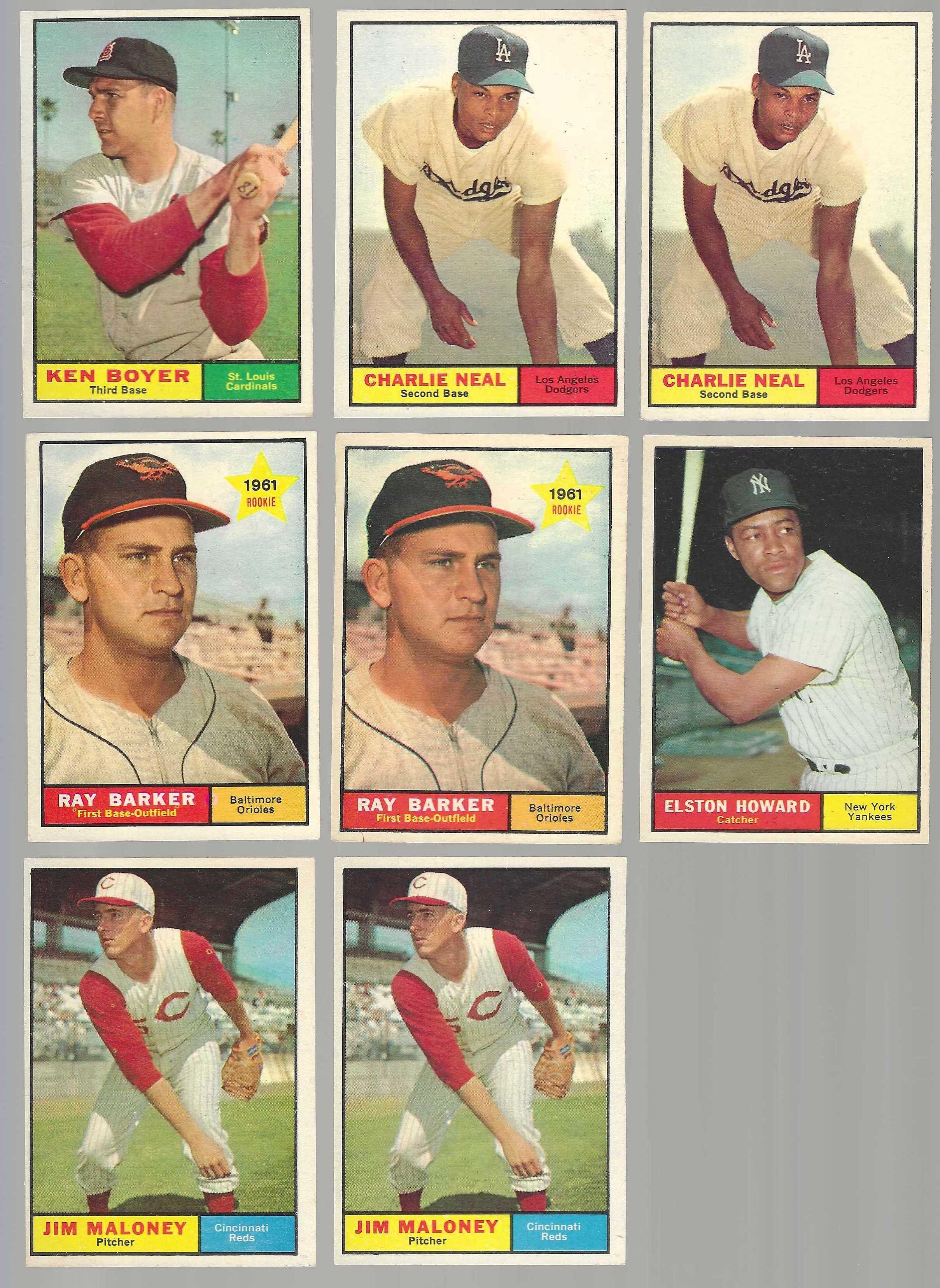Below are short bits & pieces on sportscard & baseball trading card collecting.
Please wander around the website for more info, prices, values & images
on vintage baseball, football, basketball, hockey, sport and non-sports cards.

Topps Vault & Proofs
Auctioneer Guernsey's went thru Topps offices gathering over 3,000
items for the auction. Topps spokesman reported auction sales of
OVER $1.5 million !!! Additional sales were made from a mail-only
auction. Collector Keith Olbermann, at the auction, described it
as an archaeological dig.
Topps archive material continued to accumulate after the auction
ending up with another treasure of over 250,000 transparencies,
uncut sheets, color separations, art, photos, slides, proof sheets
& wrappers, canceled checks, contracts and one-of-a-kind
items to sell.
Note: You may be on that page right now.
|

Team Autographed / Signed Baseballs
Team signed baseballs were the thing well before single-signed
balls exploded on the market.
What is a "Team Signed Baseball" ???
Simple answer: A ball with XXX signatures of a certain team
for a certain year. What is difficult is the XXX.
Baseball tons of roster moves make it nearly impossible to
"Get Them All".
Generally, team signed baseballs from early 1900's had 10 to 15
signatures, the 1940's that jumped to 18 to 25.
Joyce Sports Research Collection (Notre Dame) says "signatures must
include only members of a specific team from a specific year, and there
must be some approximation of completeness."
Not concrete but to me a "team ball" MUST have ALL the team's
STARS (unless a rookie or in season trade) and in today's market
at least 20, preferably more, and the manager.
Determining Age of Team Signed Balls
"Official" league balls have stamped signatures of current league
presidents on the "sweet spot".
Starting 1934/1935 balls were produced by Spalding (NL)
and Reach (AL). Rawlings took over in 1977/78.
Have a possible team roster at hand, ESPN & baseball-reference.com
have great sites), decipher a few signatures then solve the puzzle.
Note: You may be on that page now.
|

1952 Topps Baseball Cards
Checklist & Values
1952 is often thought of as Topps 1st baseball card set, but it was not.
Topps issued several smaller baseball card sets prior to their huge 1952 set.
Topps buzz word was "BIGGER is BETTER" for their 1952 Topps set which
Topps described as: "GIANT IN BOTH SIZE and NUMBER of CARDS" (407).
Key card in the 1952 Topps set is #311 MICKEY MANTLE.
Often called Mickey Mantle's Rookie card - BUT IT IS NOT. That honor
goes to his 1951 Bowman.
1952 Topps "High Numbers" (#311-#407), are very, very scarce with an
interesting story:
This HUGE set was released in series weeks apart. By the last (6th)
series, baseball season was over and football starting.
Candy shops had plenty of baseball cards from earlier series
so most cancelled their orders for the last series creating the scarcity.
Adding interest is how Topps disposed of the now un-needed cards including
THOUSANDS of 1952 Topps MICKEY MANTLE's. They dumped them into the Atlantic
Ocean like most of New York's trash in those days.
|

Baseball card collecting terms (part A)
Airbrushing is the art of touching up a photo prior to the card being printed.
It was generally done to remove imperfections or update or hide a players
jersey/cap logo. Because of advancements in print technology and computers this is
no longer needed.
All-Star card (AS) usually a subset card picturing a player who participated in the
previous seasonís all-star game. Topps created these in their 1958 High Number
issue and has continued the practice fairly regularly to date. Such cards
are usually designated in price guides with the abbreviation of AS.
Assorted A general mix of cards often containing many duplicates.
Auction items are sold to the highest bidder. Auctions used to be live
or thru the mail/phone but today most auctions are online.
Auction Catalog lists the rules and descriptions and often images
of the items in an auction.
Authentication verification that an item (card, autograph) is genuine. Most "game-used"
material inserts have a written declaration of authenticity on the reverse.
Authorized Issue card or memorabilia item that has been properly licensed. If
the item is of a player, his written permission must be given in order for it to be considered authorized.
© 1995-2019 "InterNet's Baseball Card Store" / Joseph Juhasz ... All Rights Reserved
|








